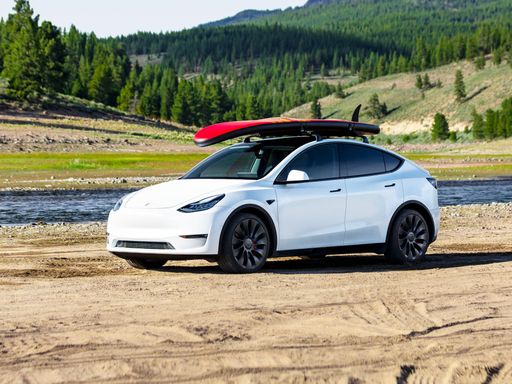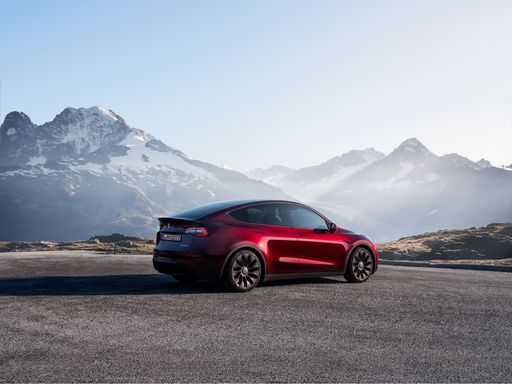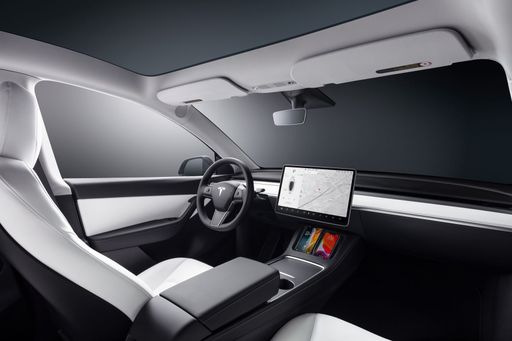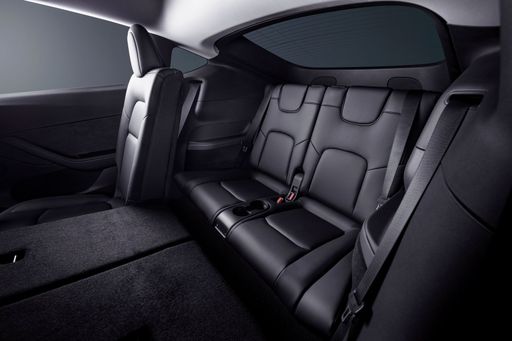Tesla Model Y vs Kia PV5 – Which model is better for everyday use?
Two cars, one duel: Tesla Model Y meets Kia PV5.
Which one wins in performance, efficiency and value for money? Find out now!
Costs and Efficiency:
When it comes to price and running costs, the biggest differences usually appear. This is often where you see which car fits your budget better in the long run.
Kia PV5 has a somewhat advantage in terms of price – it starts at 32800 £, while the Tesla Model Y costs 38600 £. That’s a price difference of around 5742 £.
In terms of energy consumption, the advantage goes to the Tesla Model Y: with 13.90 kWh per 100 km, it’s clearly more efficient than the Kia PV5 with 19.80 kWh. That’s a difference of about 5.90 kWh.
As for range, the Tesla Model Y performs noticeable better – achieving up to 622 km, about 222 km more than the Kia PV5.
Engine and Performance:
Power, torque and acceleration say a lot about how a car feels on the road. This is where you see which model delivers more driving dynamics.
When it comes to engine power, the Tesla Model Y has a clearly edge – offering 627 HP compared to 163 HP. That’s roughly 464 HP more horsepower.
In acceleration from 0 to 100 km/h, the Tesla Model Y is convincingly quicker – completing the sprint in 3.50 s, while the Kia PV5 takes 10.70 s. That’s about 7.20 s faster.
In terms of top speed, the Tesla Model Y performs convincingly better – reaching 250 km/h, while the Kia PV5 tops out at 135 km/h. The difference is around 115 km/h.
There’s also a difference in torque: Tesla Model Y pulls clearly stronger with 493 Nm compared to 250 Nm. That’s about 243 Nm difference.
Space and Everyday Use:
Cabin size, boot volume and payload all play a role in everyday practicality. Here, comfort and flexibility make the difference.
Both vehicles offer seating for 5 people.
In curb weight, Kia PV5 is slight lighter – 1860 kg compared to 1976 kg. The difference is around 116 kg.
In terms of boot space, the Kia PV5 offers noticeable more room – 1320 L compared to 822 L. That’s a difference of about 498 L.
In maximum load capacity, the Kia PV5 performs clearly better – up to 4420 L, which is about 2398 L more than the Tesla Model Y.
When it comes to payload, Kia PV5 clearly takes the win – 790 kg compared to 472 kg. That’s a difference of about 318 kg.
Who comes out on top?
Overall, the Tesla Model Y shows itself to be leaves the rival little chance and secures the title of DriveDuel Champion.
It convinces with the more balanced overall package and proves to be the more versatile choice for everyday use.

Tesla Model Y
Tesla Model Y
The Tesla Model Y stands out in the electric vehicle market with its sleek design and impressive range. Its interior is minimalist yet stylish, offering a spacious cabin that enhances the driving experience. The Model Y also features advanced technology, including an intuitive infotainment system, making it a leader in innovative motoring.
details @ tesla.com
@ tesla.com
 @ tesla.com
@ tesla.com
 @ tesla.com
@ tesla.com
 @ tesla.com
@ tesla.com
Kia PV5
The Kia EV5 is an exciting new entrant in the landscape of electric SUVs, promising a blend of style and innovation that captures attention. It boasts a sleek and modern design that aligns with Kia's evolving aesthetic identity, blending practicality with eye-catching details. With its foray into the electric vehicle segment, the EV5 is set to offer a highly competitive option for those looking to embrace sustainable mobility without compromising on comfort or tech features.
details

|
|
|
|
|
Costs and Consumption |
|
|---|---|
|
Price
38600 - 53100 £
|
Price
32800 - 38900 £
|
|
Consumption L/100km
-
|
Consumption L/100km
-
|
|
Consumption kWh/100km
13.9 - 16.2 kWh
|
Consumption kWh/100km
19.8 - 20.3 kWh
|
|
Electric Range
500 - 622 km
|
Electric Range
288 - 400 km
|
|
Battery Capacity
64.5 - 85 kWh
|
Battery Capacity
51.5 - 71.2 kWh
|
|
co2
0 g/km
|
co2
0 g/km
|
|
Fuel tank capacity
-
|
Fuel tank capacity
-
|
Dimensions and Body |
|
|---|---|
|
Body Type
SUV
|
Body Type
Cargo Van, Bus
|
|
Seats
5
|
Seats
2 - 5
|
|
Doors
5
|
Doors
4 - 5
|
|
Curb weight
1976 - 2108 kg
|
Curb weight
1860 - 2145 kg
|
|
Trunk capacity
822 L
|
Trunk capacity
1320 L
|
|
Length
4790 - 4796 mm
|
Length
4695 mm
|
|
Width
1921 mm
|
Width
1850 - 1895 mm
|
|
Height
1611 - 1624 mm
|
Height
1923 mm
|
|
Max trunk capacity
2022 L
|
Max trunk capacity
2300 - 4420 L
|
|
Payload
418 - 472 kg
|
Payload
505 - 790 kg
|
Engine and Performance |
|
|---|---|
|
Engine Type
Electric
|
Engine Type
Electric
|
|
Transmission
Automatic
|
Transmission
Automatic
|
|
Transmission Detail
Reduction Gearbox
|
Transmission Detail
Reduction Gearbox
|
|
Drive Type
Rear-Wheel Drive, All-Wheel Drive
|
Drive Type
Front-Wheel Drive
|
|
Power HP
299 - 627 HP
|
Power HP
121 - 163 HP
|
|
Acceleration 0-100km/h
3.5 - 5.9 s
|
Acceleration 0-100km/h
10.7 - 16.3 s
|
|
Max Speed
201 - 250 km/h
|
Max Speed
135 km/h
|
|
Torque
420 - 493 Nm
|
Torque
250 Nm
|
|
Number of Cylinders
-
|
Number of Cylinders
-
|
|
Power kW
220 - 461 kW
|
Power kW
89 - 120 kW
|
|
Engine capacity
-
|
Engine capacity
-
|
General |
|
|---|---|
|
Model Year
2025
|
Model Year
2025
|
|
CO2 Efficiency Class
A
|
CO2 Efficiency Class
A
|
|
Brand
Tesla
|
Brand
Kia
|
Is the Tesla Model Y offered with different drivetrains?
The Tesla Model Y is offered with Rear-Wheel Drive or All-Wheel Drive.
The prices and data displayed are estimates based on German list prices and may vary by country. This information is not legally binding.
